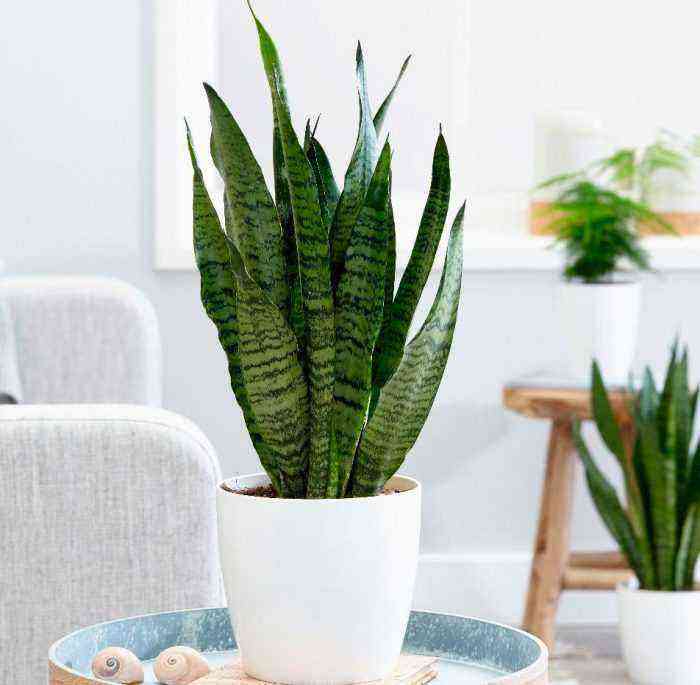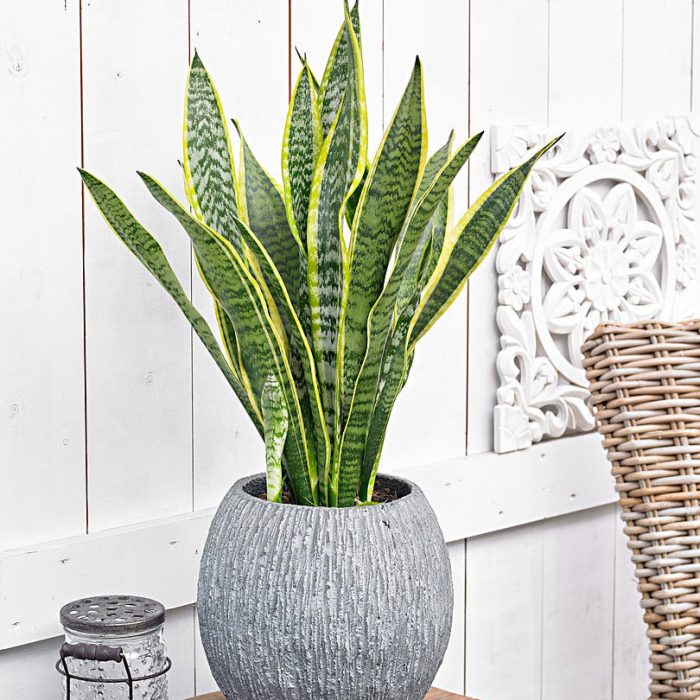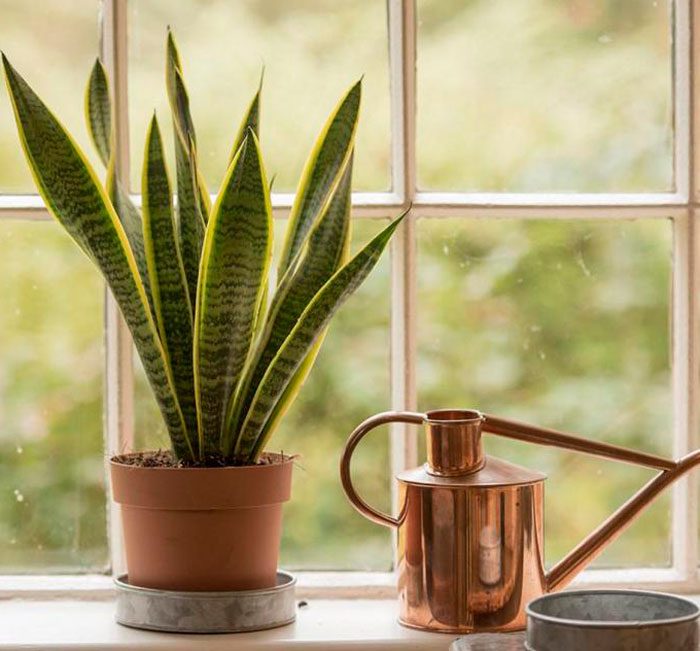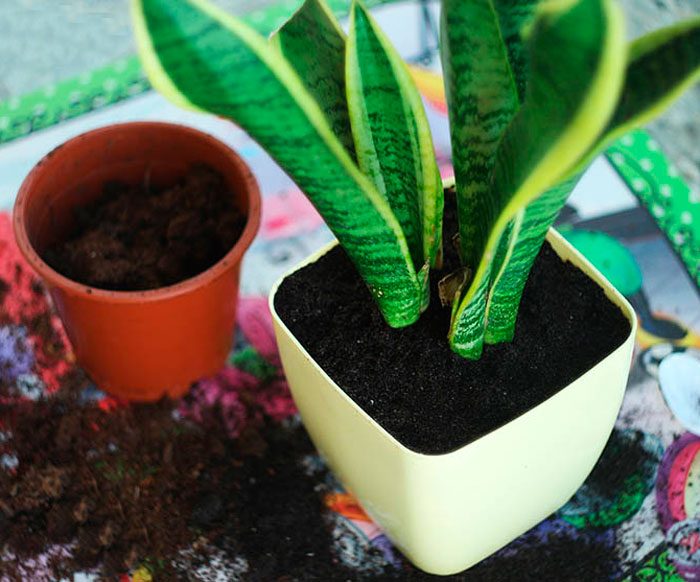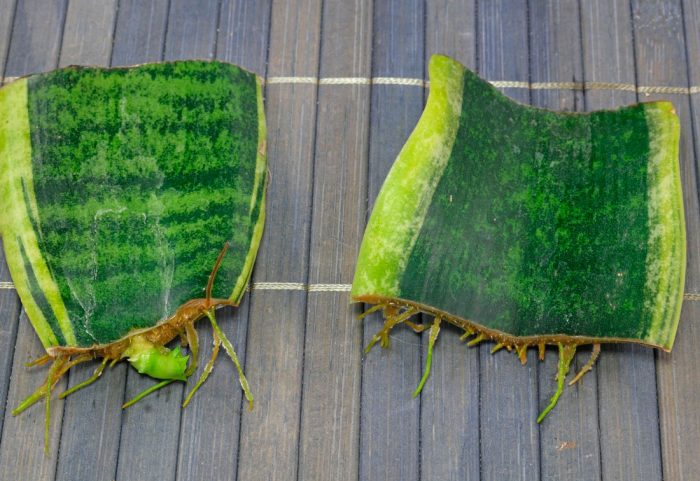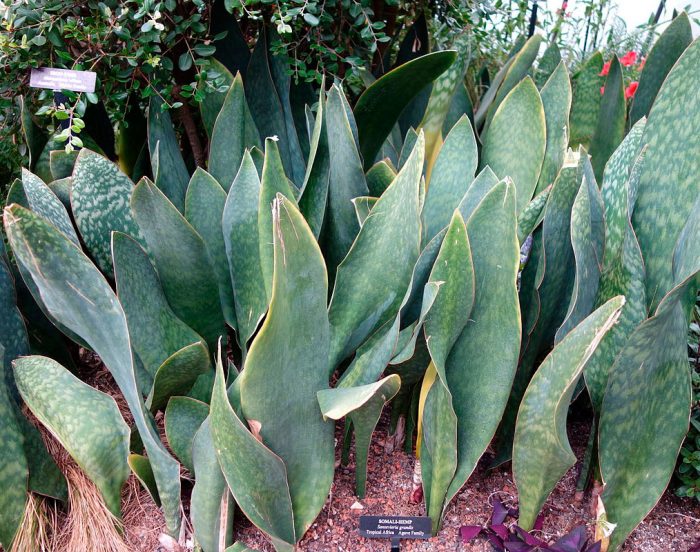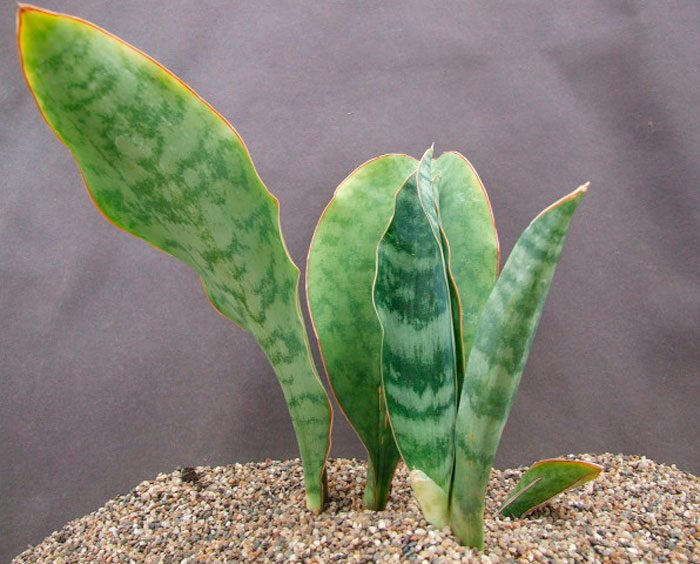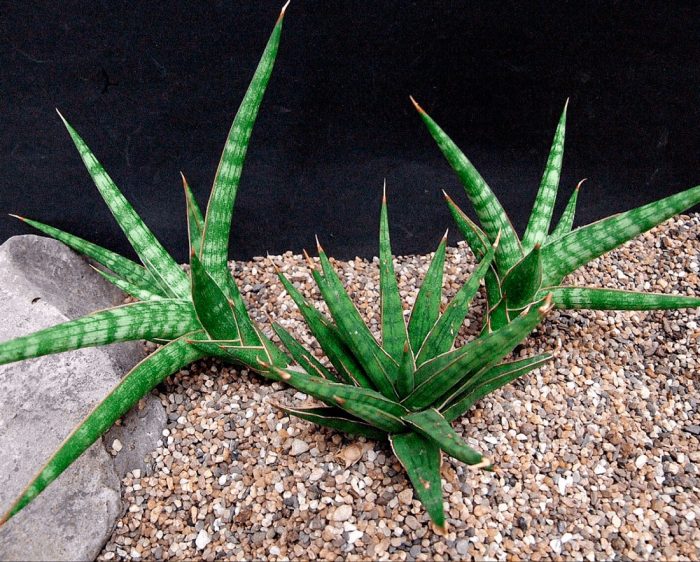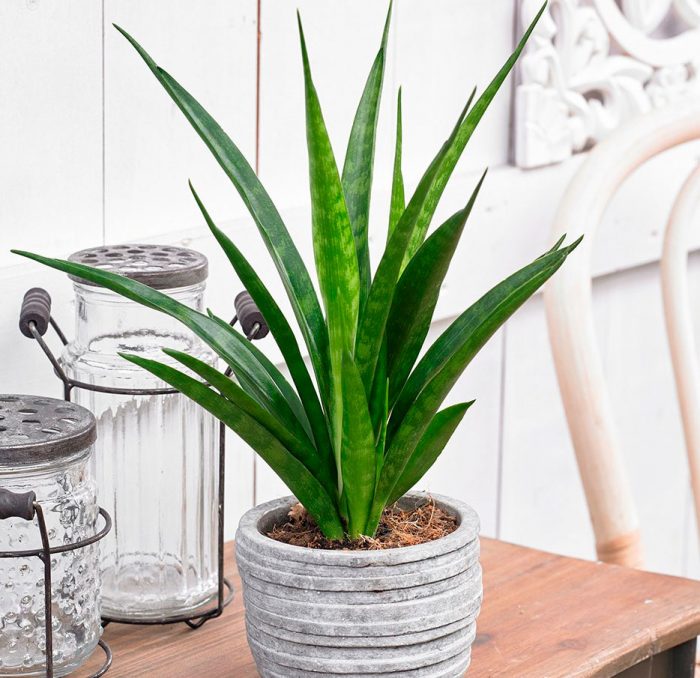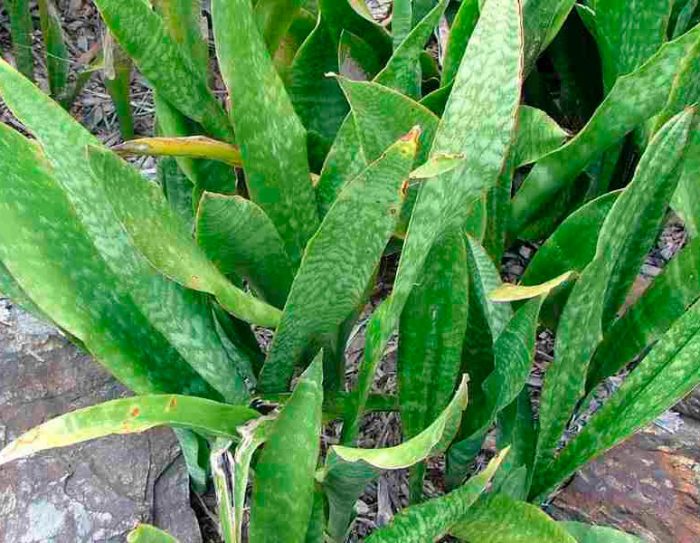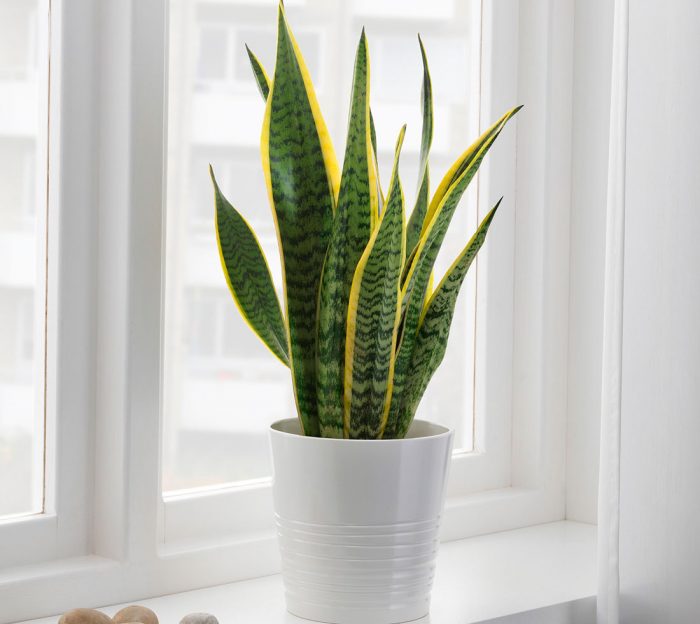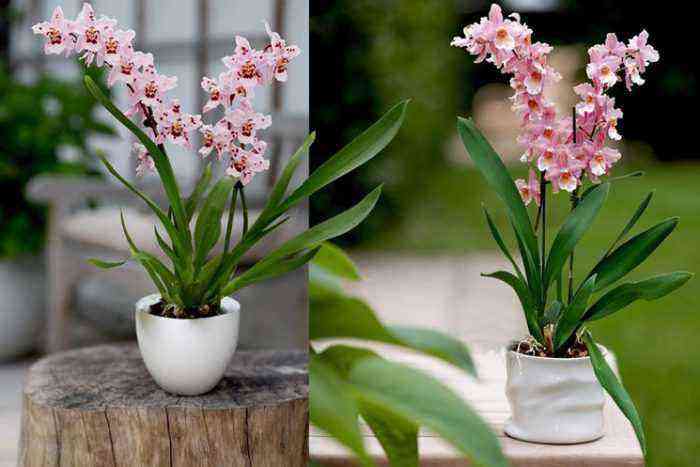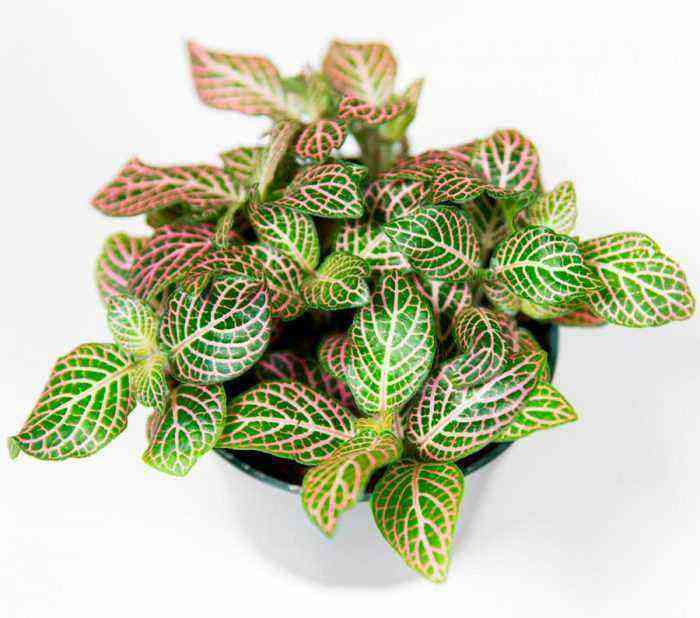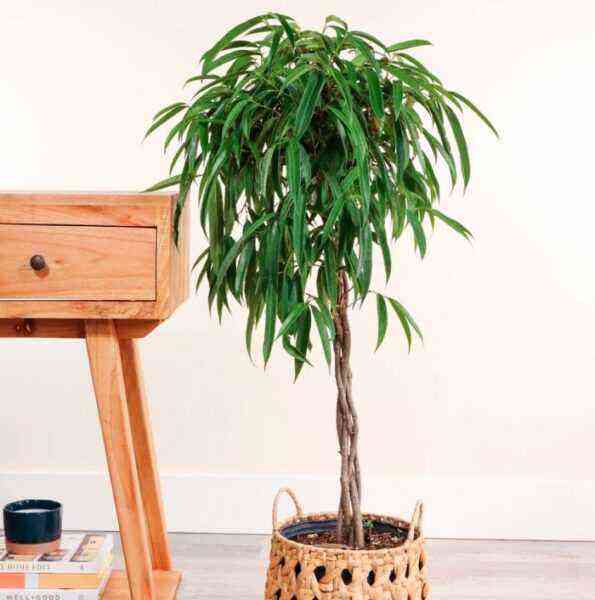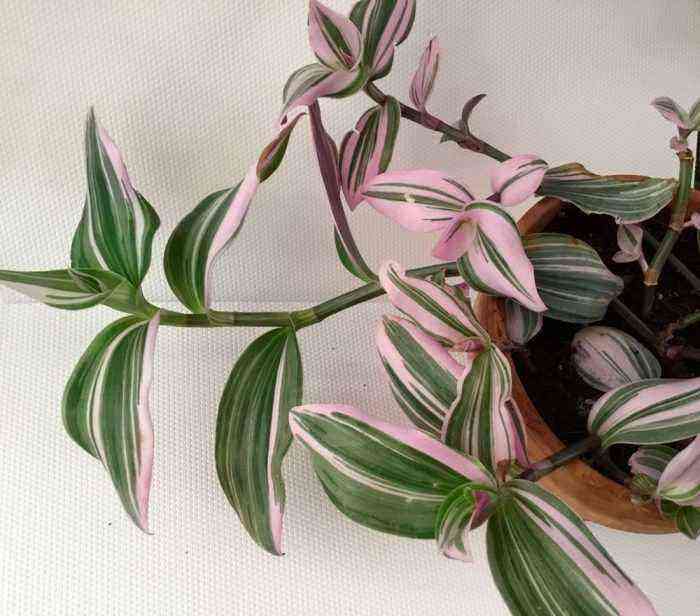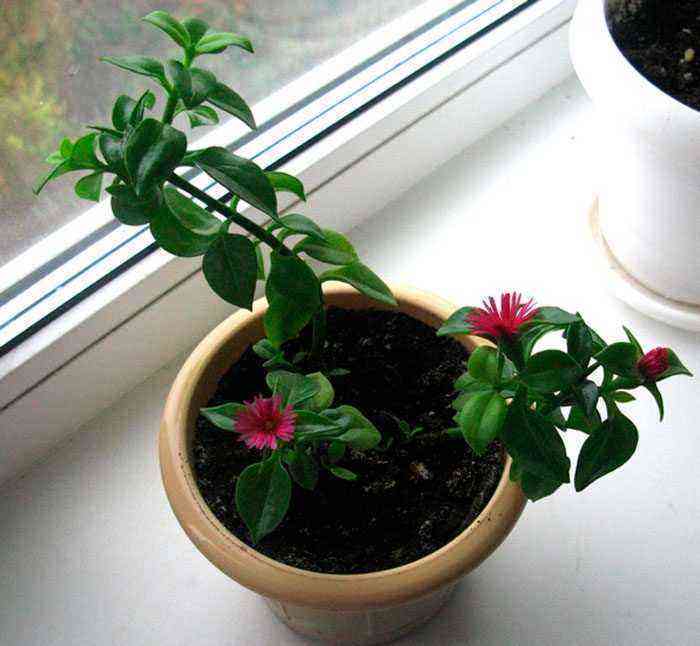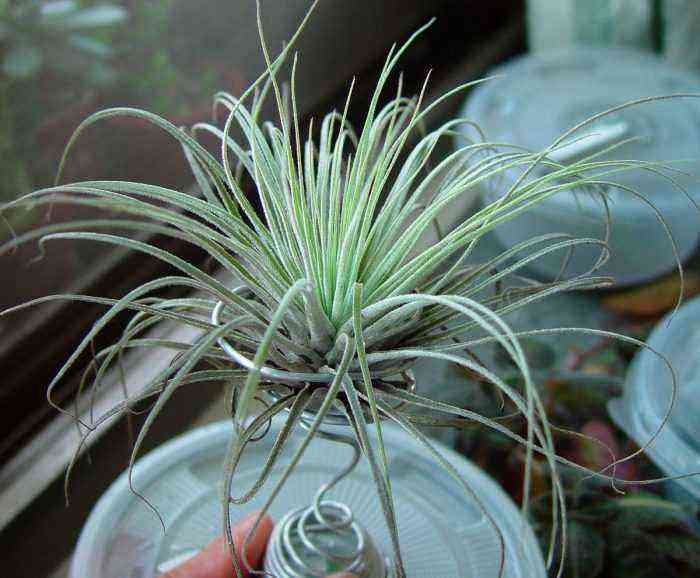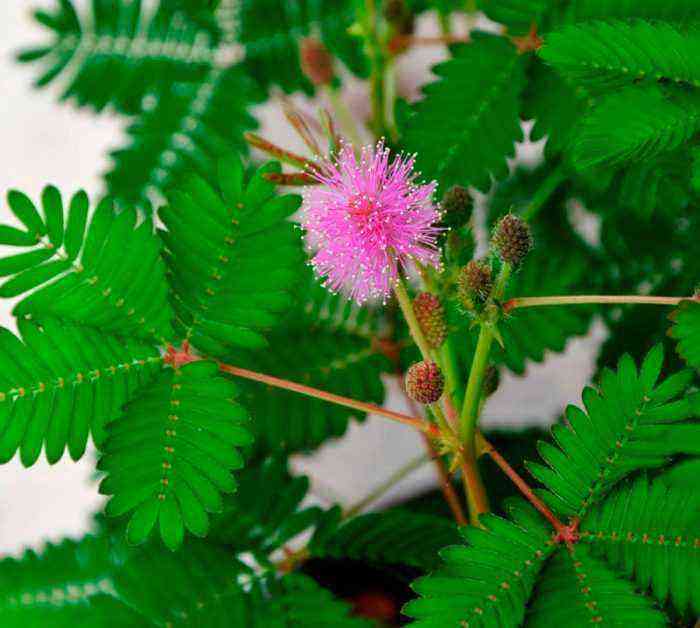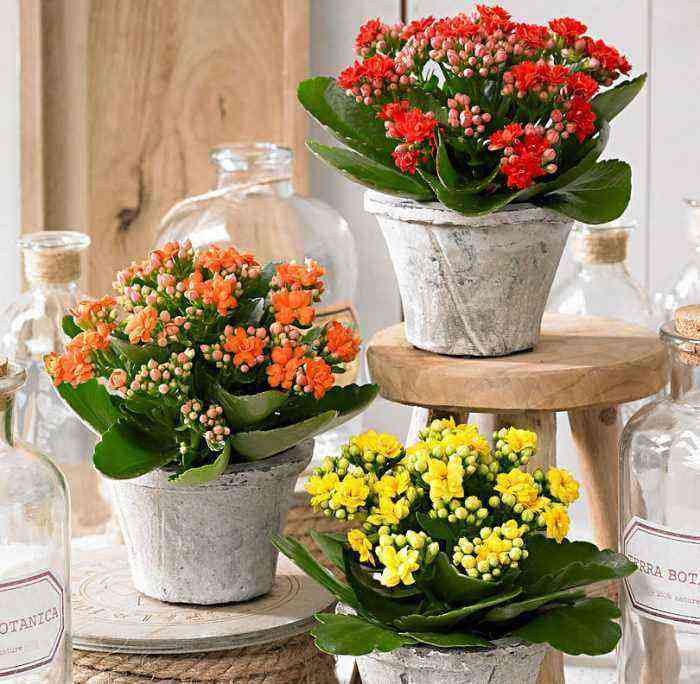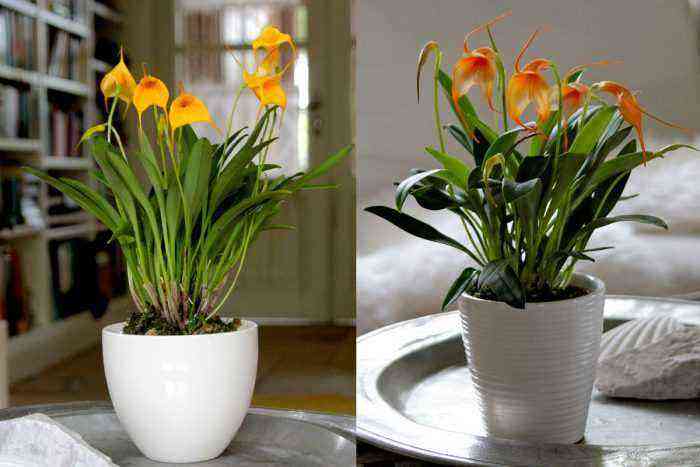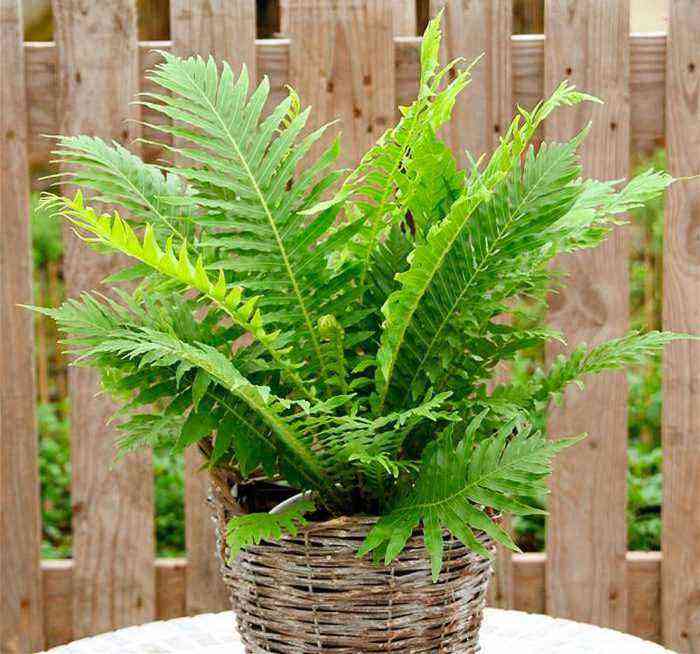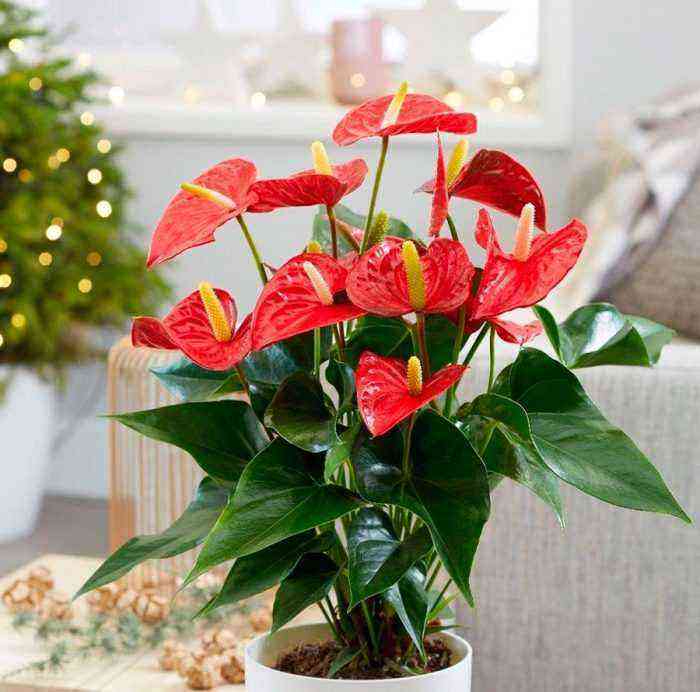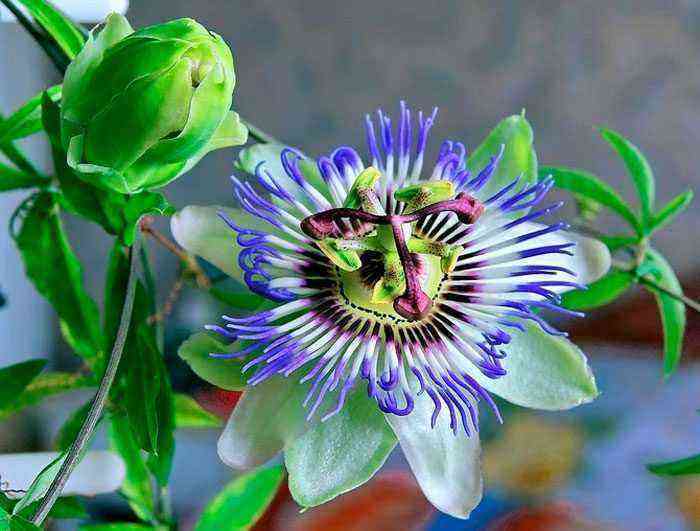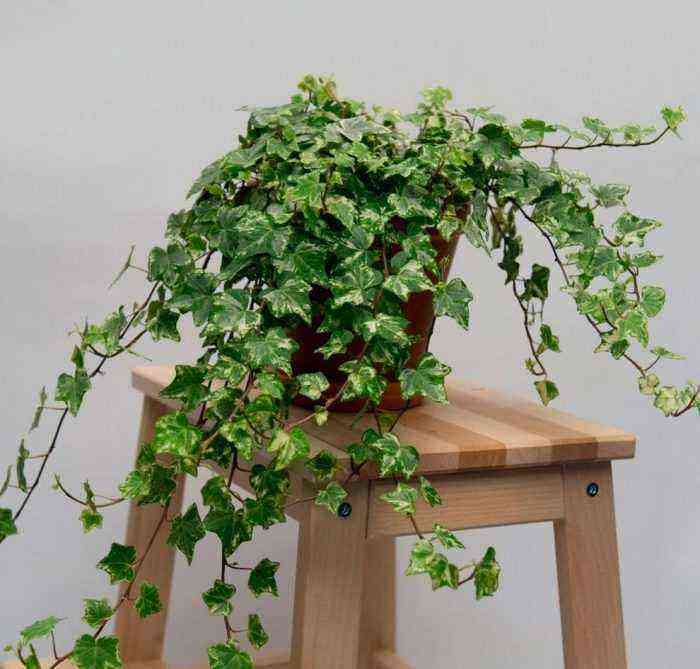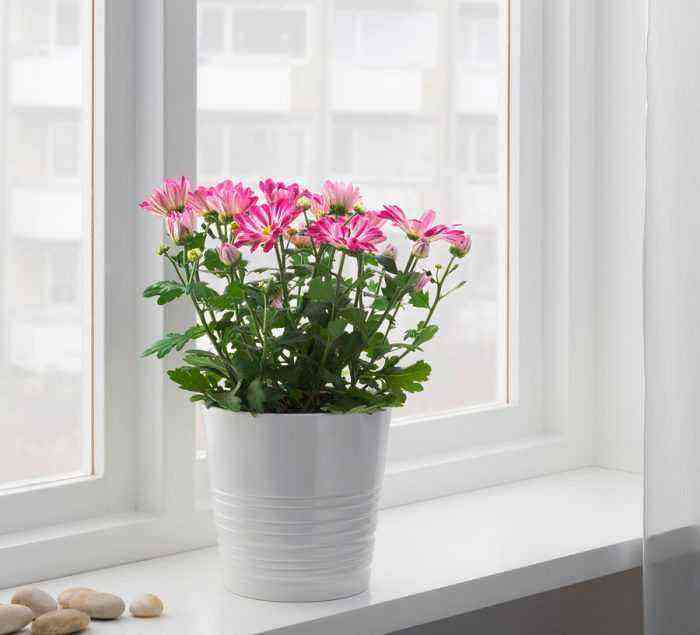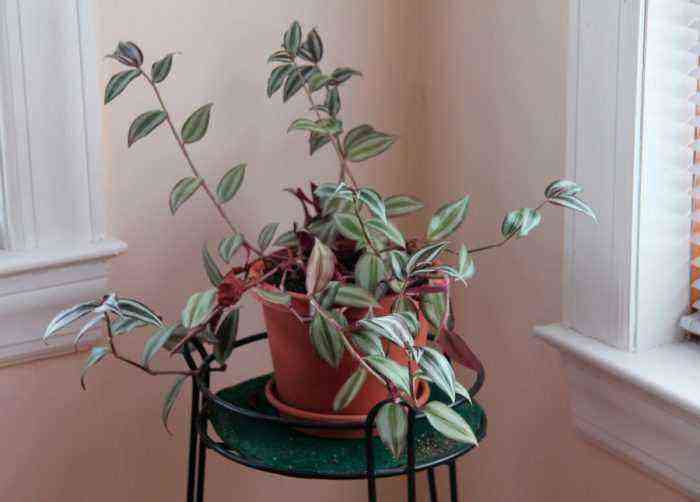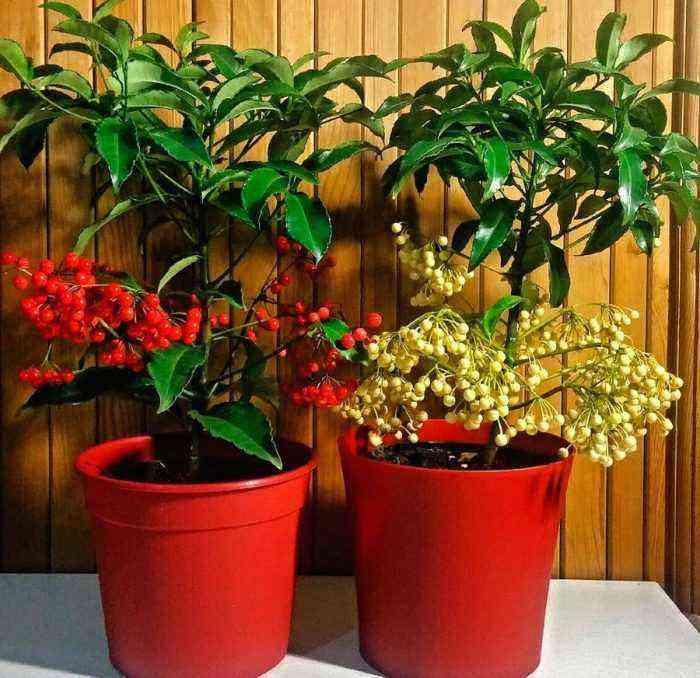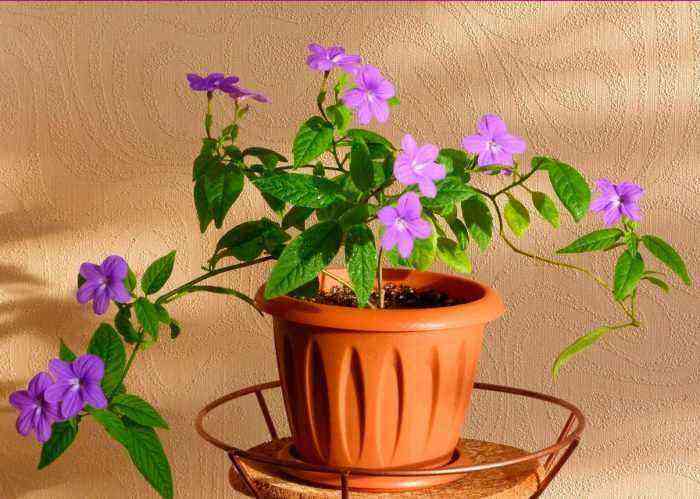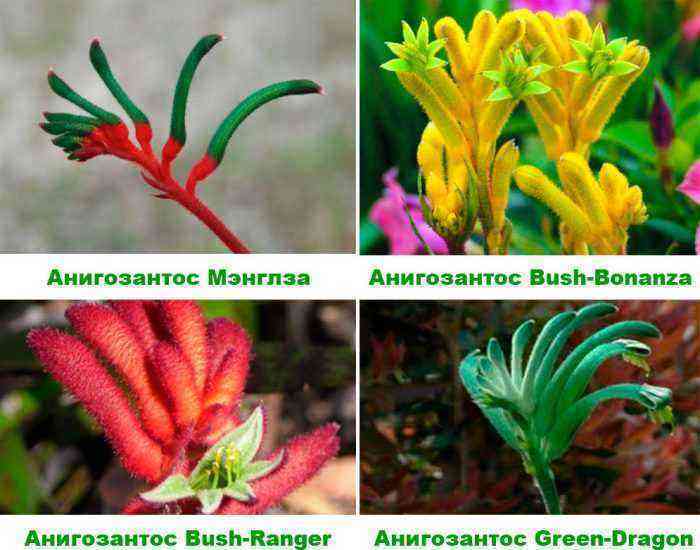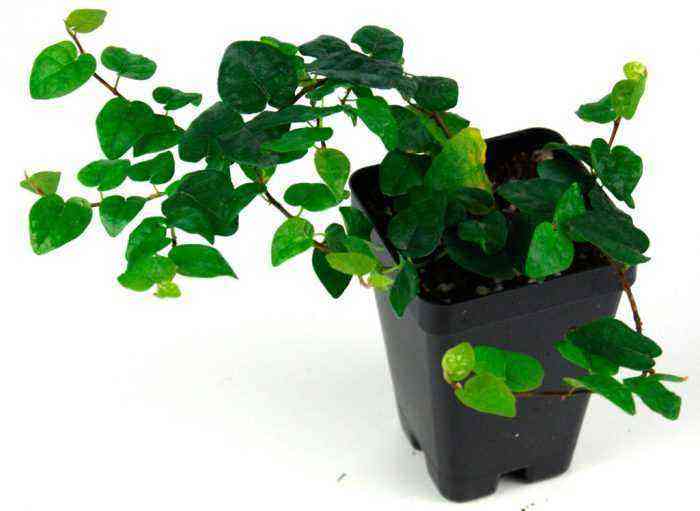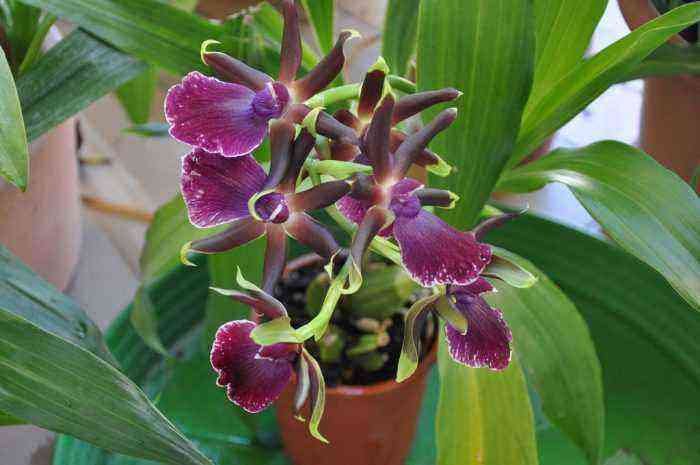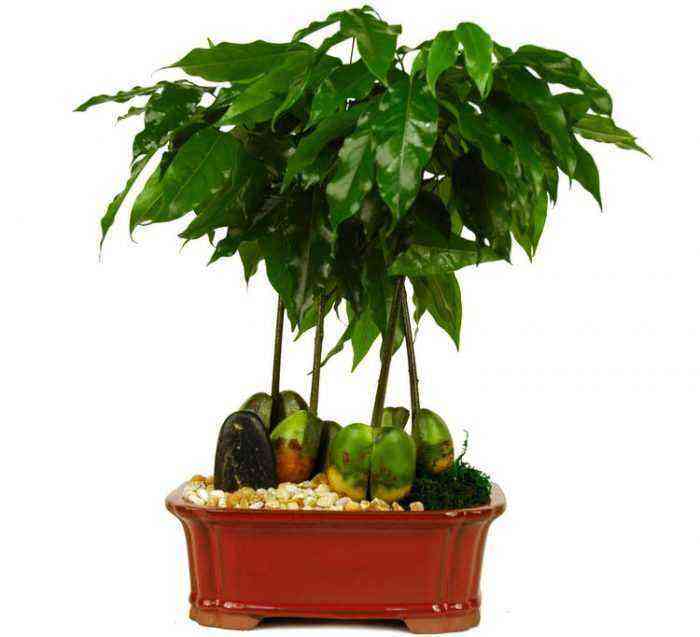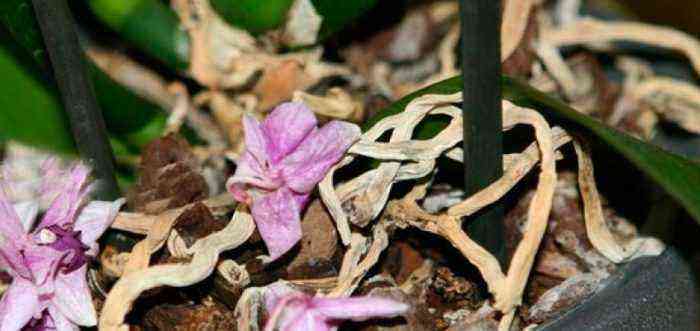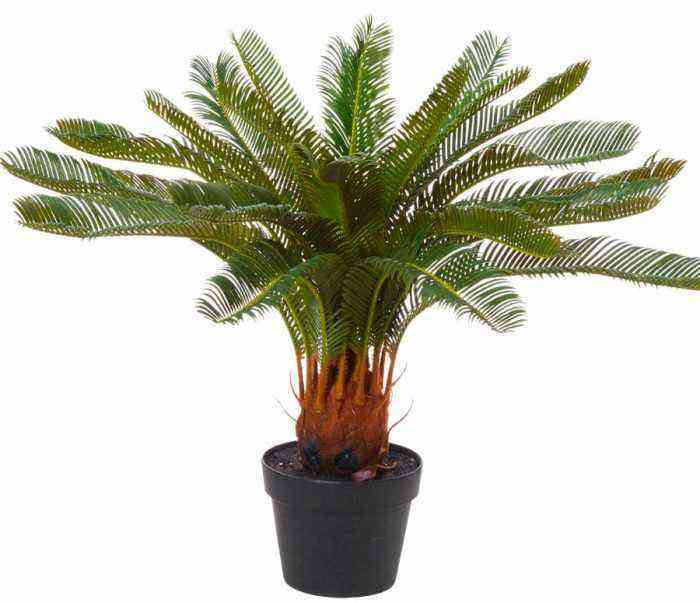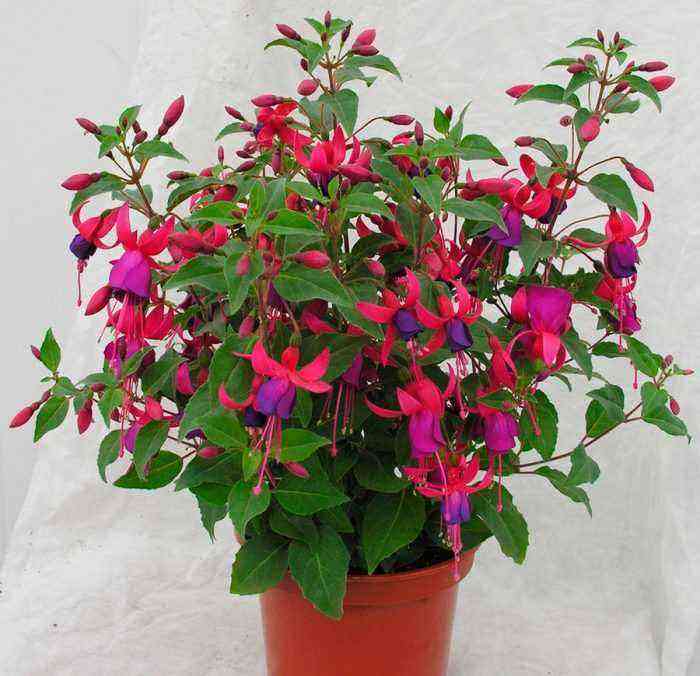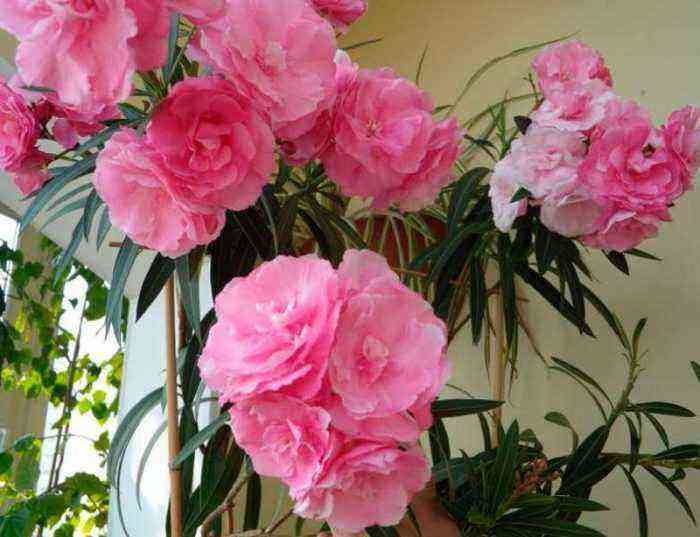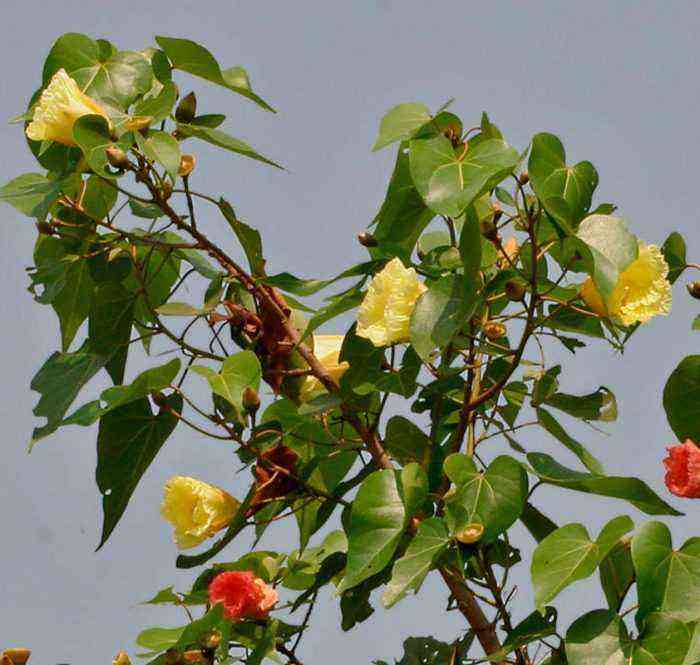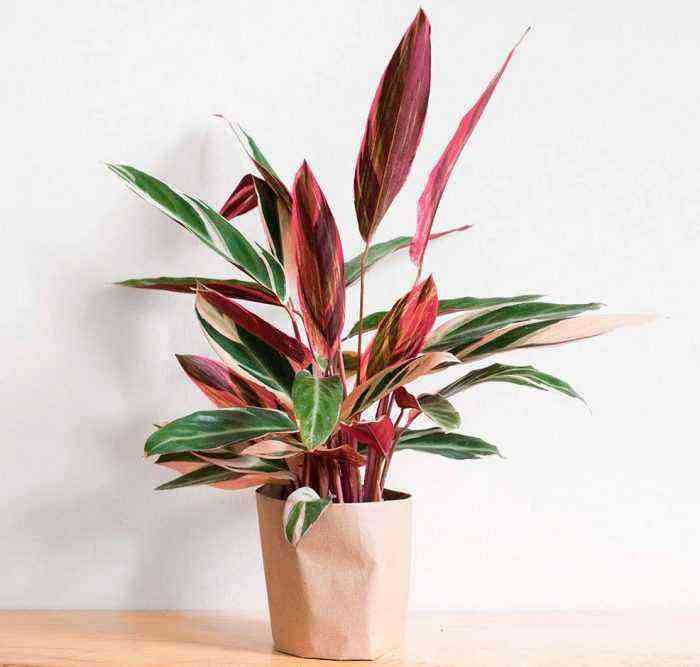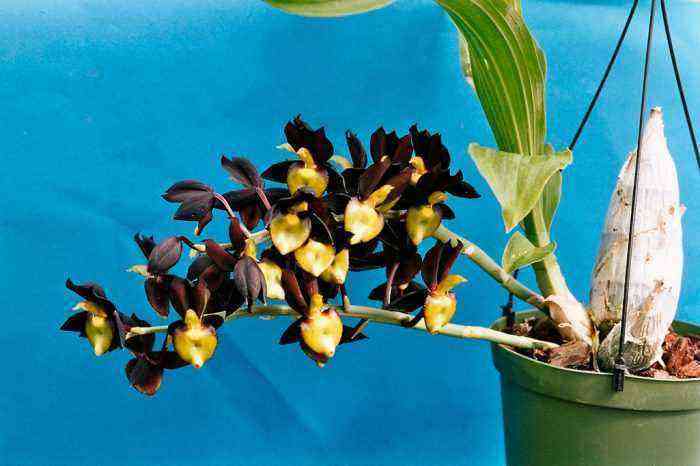The perennial evergreen stemless plant Sansevieria, either Sansevieria or Sansevieria, belongs to the Asparagus family (in part of the catalogs, to the Agave family). This genus unites about 60 species, which in natural conditions can be found in dry and rocky areas of the subtropical and tropical zones of Madagascar, Indonesia, Africa, South Florida and India. This home-grown plant is distinguished by its unpretentiousness, and therefore it is very popular. The people also call it “snake skin”, or “pike tail”, or “mother-in-law’s tongue”. Sansevier is valued for the fact that it is almost impossible to destroy it, even if you do not approach it for half a month, it will not dry out, and it will still delight you with its bright foliage. The flower is also popular among designers who not only decorate interiors with it, but also use it to create flower arrangements.
Brief description of cultivation
- Flowering… Grown as an ornamental deciduous plant.
- Illumination… Grows well in a slightly shaded area or in bright but diffused light.
- Temperature conditions… The flower grows well at normal room temperature, but in winter the room should not be colder than 16 degrees.
- Watering… Moisten the substrate systematically and in moderation. In the cold season, watering should be more rare than in summer.
- Air humidity… It grows normally at the same level of air humidity, which is typical for living rooms.
- Fertilizer… The flower is fed only during active growth once every 1 days; for this, fertilizer is used for decorative deciduous plants or for cacti.
- The rest period… Not pronounced.
- Transfer… The plant is transplanted only if necessary, when its root system becomes cramped in the pot.
- Reproduction… Leafy cuttings and rhizome division.
- Harmful insects… Mealybugs, thrips and spider mites.
- disease… Root rot and anthracnose.
Sansevieria care at home
Each plant has its own characteristics, as well as advantages and disadvantages. Before you decide to decorate your house with this or that flower, try to first learn in more detail how to care for it and what it needs for normal development and growth. And then think about whether you can grow it or not.
The pike tail differs from many other indoor plants in that it is not demanding to care for and at the same time has a spectacular appearance. Growing features:
- Sansevieria is very rarely fed, only once a year. However, if fertilizing is more frequent, then the flower will react positively to this.
- It feels best on the windowsill, since it needs a lot of natural light. At the same time, it can be both cool and warm on the windowsill.
- The scorching rays of the sun in the afternoon can leave burns on the foliage; therefore, windows are ideal for growing a pike tail, in which direct rays of the sun fall only in the late afternoon.
- Regular stagnation of water in the root system can destroy the flower.
Temperature regime and air humidity
For a plant, it does not really matter what the temperature and humidity of the air in the room. But at the same time, it is impossible to allow the room to be cooler than 16 degrees in the cold season, as this will negatively affect the appearance of the bush. Also, to preserve its decorative effect, do not forget to systematically wipe the foliage with a damp sponge, which will remove dust from it.
Watering
In order for the sansevier to grow and develop normally, it must be properly watered. To understand when to water a flower, you can purchase a moisture indicator from a specialty store. Distilled or rainwater is best suited for watering a flower, but you can also use well-settled tap water. It must be at room temperature. In winter, the frequency of watering depends on the air temperature in the room: the colder it is in the room, the less often you need to moisten the substrate in the pot.
Sansevieria transplant
Transplant the pike tail if necessary, when the root system completely fills the flower pot. On average, young bushes are subjected to this procedure once every 1 years, and adults – once every 2 years. Transplanting sansevieria is easy, but remember to prepare the right potting soil for this. It is not recommended to use ordinary garden soil for this; ready-made soil mixture sold in a specialized store is best suited for transplanting. Its approximate composition should be as follows: sod and leafy soil, as well as sand (1: 3: 2). Even in the purchased ready-made soil mixture, fine gravel and perlite may be contained.
The transplant is carried out only when the roots appear from the drainage holes. This means that the root system is very cramped in the pot. A suitable flower pot should have thick walls, it is better if it is earthen. The fact is that a powerful root system is capable of breaking thin walls, while long, heavy foliage can turn a light pot over. Also, a container suitable for transplanting should not be very high, but rather wide. Be sure to make a good drainage layer at the bottom of the pot.
Additional fertilizing
You need to feed the pike tail only in spring and summer 1 time in 30 days. For this, liquid mineral fertilizer for cacti or for decorative deciduous crops is well suited. Do not add too much nitrogen to the substrate as this can damage the flower. Experts advise using a nutritional formula, the concentration of which is two times weaker than that recommended by the manufacturer (see instructions). If you are growing a species with a pattern on the foliage, then the fertilizer concentration should be three times less than the manufacturer’s recommended concentration. If you feed it with a more saturated solution, then because of this, the foliage can become monotonous.
Methods of reproduction
Fragment of the rhizome
Sansevier can be propagated by lateral shoots, dividing rhizomes and leafy cuttings. It is recommended to divide the rhizome in the spring during the transplantation of an overgrown bush. To do this, remove the bush from the pot and with a very sharp tool divide its rhizome into several parts, while each of the divisions must have at least one growth point. Delenki are planted in individual pots, after which they are placed in a place where it is always warm, and they are provided with regular moderate watering. In this way, species with both variegated and green foliage can be propagated.
Leaf cuttings
Cut off the old plate and divide it into pieces that are 40 to 50 mm long. After they have slightly dried in the open air, they should be planted for rooting at an angle of 45 degrees in a container filled with sand. From above, the stalk is covered with a cap, which can be a cut bottle or glass jar, and they provide it with systematic moderate watering through the pallet. After 30-40 days, the cutting should give roots, and by this time young leaves will grow from new buds. After that, the cutting should be transplanted into a permanent pot filled with potting soil for an adult plant. In this way, only species with green foliage can be propagated. Even if you try to take a cutting from a bush with striped foliage, the baby that appears will be green.
Types of sansevieria with photos and names
The rhizome of sansevieria is creeping. The height of powerful and very rigid basal leaf plates is about 100 centimeters and even more. The foliage can be painted in various shades of brown and green, sometimes it is decorated with specks or stripes. Flowering is of little decorative value. The resulting cylindrical inflorescences consist of greenish-white small flowers that bloom at sunset and have a subtle vanilla scent. The fruit is a berry with several seeds inside, but when grown at home, the flower almost never bears fruit.
Popular types:
Sansevieria large (Sansevieria grandis)
This perennial plant has a rosette consisting of 2–4 greenish succulent leaf plates, the length of which varies from 30 to 60 centimeters, and their width is 15 centimeters. Dark stripes are located transversely on the plate, and pale red edging on the edge.
Sansevieria hyacinthoides
The height of the bush is about 0,5 meters. The leaf plates are collected in bunches of 2–4 pieces, their width is about 7 centimeters, and their length is 14–45 centimeters. On the dark green plate there are W-shaped streaks of a greenish tint. The edge of the leaves is whitish or pale red.
Sansevieria dooneri
This species is an unexpressed leafy succulent. It forms leaf rosettes, which can include up to 20 erect flat sheet plates that are about 3 centimeters wide and about 40 centimeters long. The color of the foliage is green, and it is decorated with a pattern of a dark green hue.
Sansevieria graceful, or graceful (Sansevieria gracilis)
It is a perennial succulent plant. The foliage covers the base of the stem with a height of about 50-60 mm. Leathery to the touch, leaf plates have a long-pointed oval shape and a grayish-green color, they are decorated with transverse stains of a beige-gray hue.
Sansevieria Kirkii
The rhizome of the bush is short, and the rosettes include very few green leaf plates, which are decorated with whitish spots and a brownish-red edging running along the edge. There are varieties with brownish red and brown foliage.
Sansevieria liberian (Sansevieria liberica)
The species is an unexpressed leafy succulent. Unfolded rosettes consist of 6 flat leaf plates that grow parallel to the soil surface. In very large bushes, foliage can reach a meter in height, and its width is about 8 centimeters. On the surface of the dark green foliage, there are blurry greenish streaks and stains, and a thin brown or white-red edging runs along the edge.
Sansevieria three-lane (Sansevieria trifasciata)
This type is most popular with flower growers. Long, labeled leaf blades have yellowish-green or green edging. Even in culture, rosette sansevier three-lane Hani (Sansevieria trifasciata Hahnii) are widespread, their foliage can be striped or green.
Sansevieria properties
Sansevier contains a large number of biologically active substances, but saponins are considered the most important of them, because if they are used correctly, they can be very useful. In official medicine, saponins are used in the production of drugs that have anti-inflammatory, expectorant, choleretic and laxative properties. In alternative medicine, this plant is used for inflammation of the oral cavity, cystitis, otitis media, cuts and other damage to the skin. Also, saponins have foaming properties, so they are widely used in the cosmetic industry for the production of shampoos and liquid soaps.
During pregnancy, it is better to refuse to use sansevier as a healing agent, since it contains substances that have an abortive effect.
